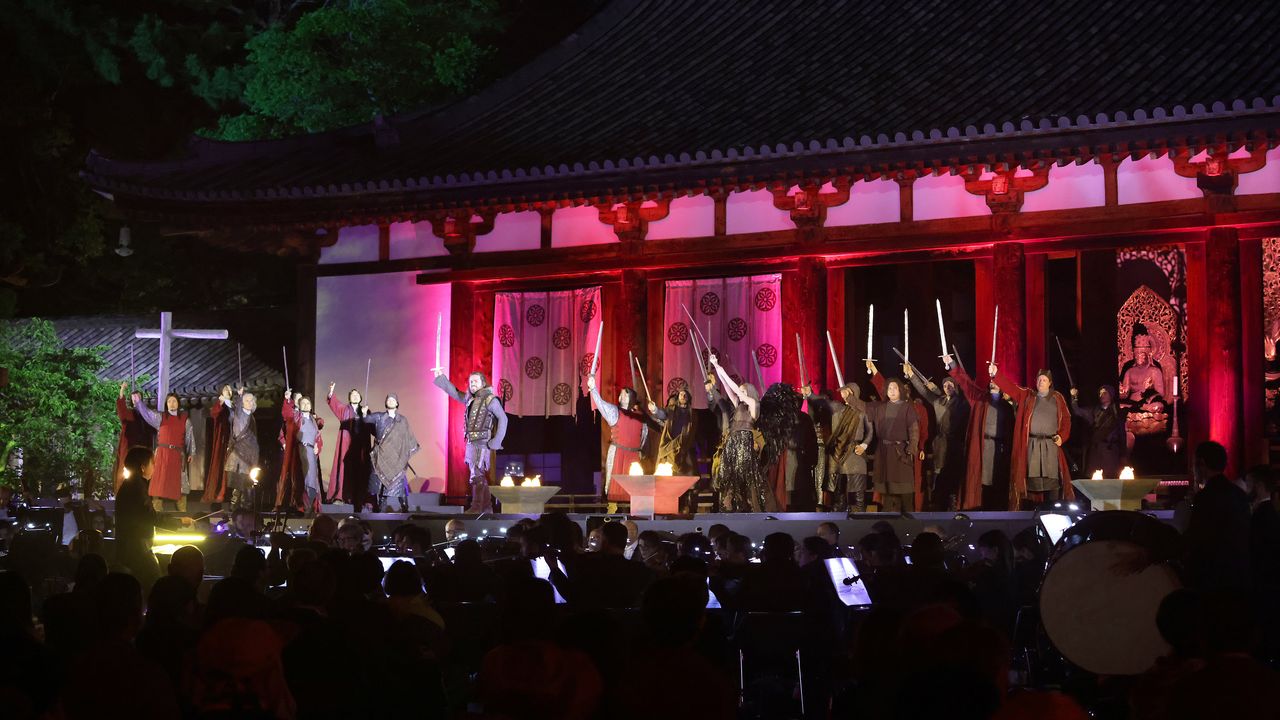
Open-Air Opera at Nara’s Hōryūji
Guideto Japan
Culture Art- English
- 日本語
- 简体字
- 繁體字
- Français
- Español
- العربية
- Русский
Cultural Fusion
The open-air Japan Opera Festival took place from May 18 to 21 at the Nara temple Hōryūji, a World Heritage site. In Italy, the birthplace of opera, open-air opera concerts at Arena di Verona, a Roman amphitheater also inscribed on the World Heritage list, are nothing unusual. But they are a rare occurrence in Japan, especially at a site like Hōryūji, where an Italian opera company and orchestra performed Giuseppe Verdi’s Il Trovatore.
Open-air performances of the Japan Opera Festival have taken place since 2015 at historic venues in Japan including Himeji Castle, Kumamoto Castle, and the Heijōkyō Daigokuden Great Hall of State, reconstructed at the site of one of Japan’s ancient capitals in Nara Prefecture. After a three-year hiatus due to COVID-19, the event resumed this year, this time at Hōryūji, to mark the thirtieth anniversary of the temple’s inclusion on the World Heritage list.
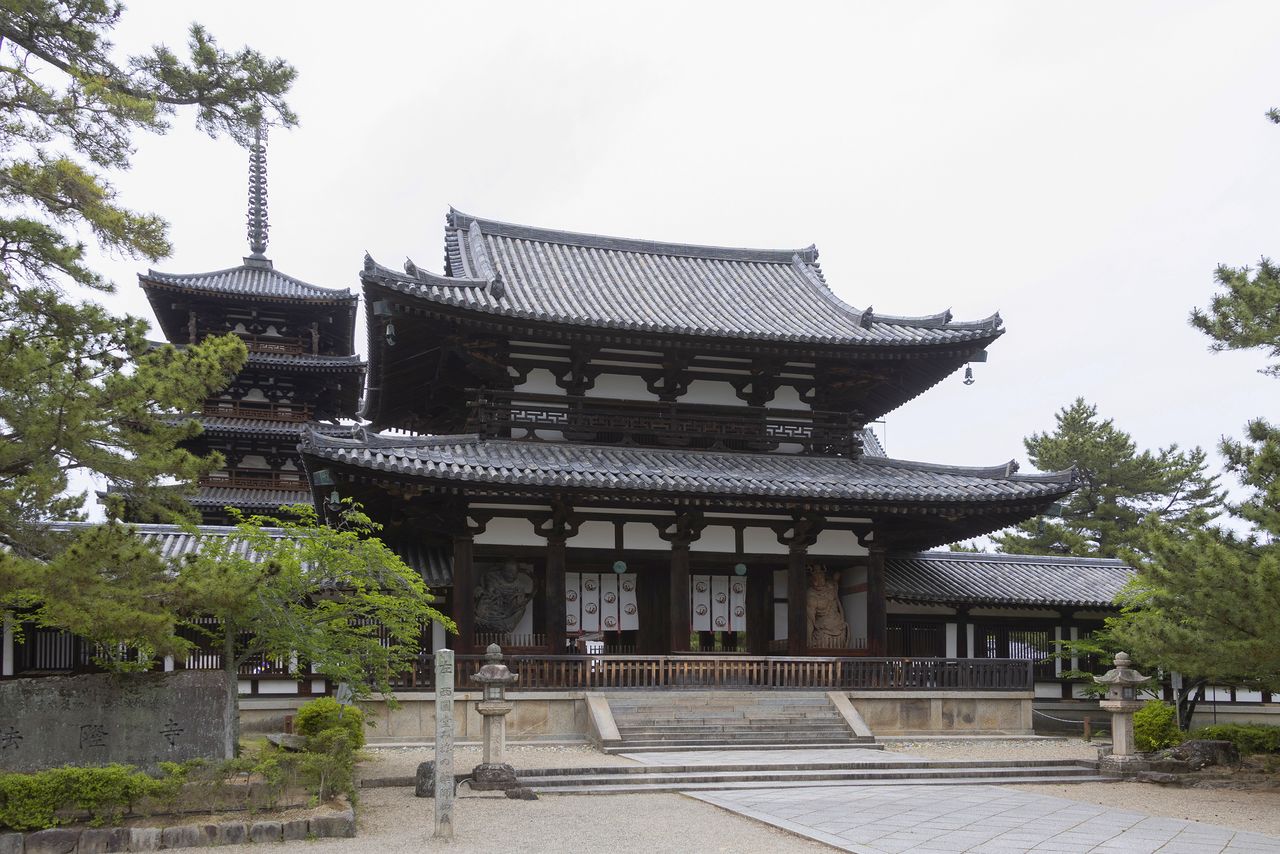
The Chūmon gate is flanked by a pair of Kongō Rikishi guardian figures. Beyond the gate is the Sai-in western complex where the performances took place. (© Kinoshita Kiyotaka)
Hōryūji, one of Japan’s oldest temples, was founded by Prince Shōtoku in 607. The temple’s artworks and architecture date from the time when Buddhism was introduced into Japan from China in the sixth and seventh centuries and include over 190 structures or works designated national treasures or important cultural properties.
Performances of Il Trovatore took place in the temple’s western complex, where some of the world’s oldest wooden structures stand, including the Kondō main hall and the five-story pagoda erected in the seventh century. The opera, a tale of curses and revenge, unfolded in a mystical atmosphere under the gaze of a trio of Buddhist statues housed in the Daikōdō lecture hall.
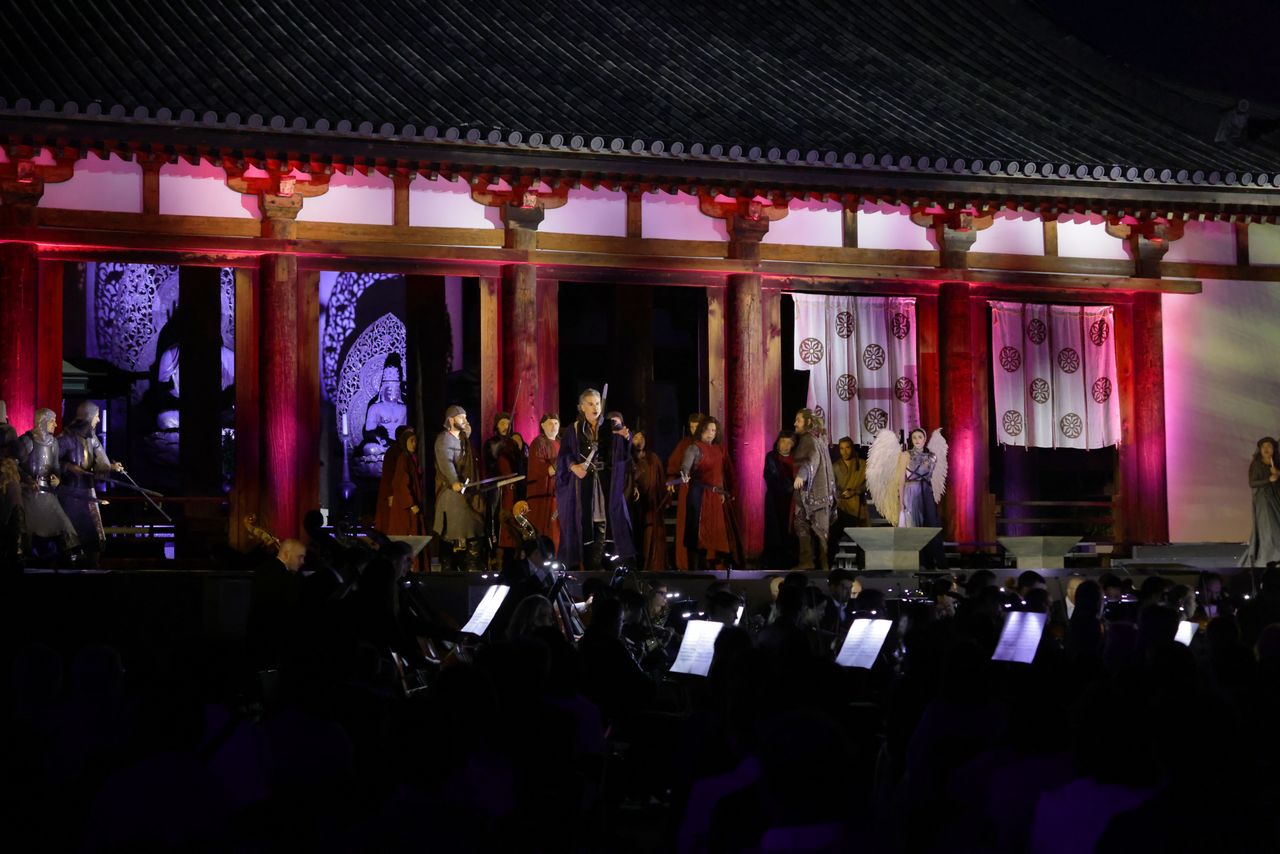
The Daikōdō serves as a backdrop to the stage. Both the building and the statues in the inner sanctum, dating from the Heian period (794–1185), are national treasures. (© Sawakami Opera Foundation)
Opera audiences usually applaud or cheer after the end of each act. Verdi composed his work so that it would be played without interruption, however, as he believed that any pause interfered with the flow of the story. Including intermissions, the performances lasted over two and half hours, keeping the audience spellbound. They erupted into thunderous applause and cries of “bravo” after the final curtain. At the curtain calls, the performers bowed to the statues in the background, and clapping reverberated through the temple’s normally hushed air.
Optional Tour to View Restoration Work
Spectators at this unique performance in Nara, a world-famous tourism spot, included many visitors from abroad. Some of them participated in a tour of restoration work of the temple’s cultural properties, accompanied by an English-speaking interpreter.
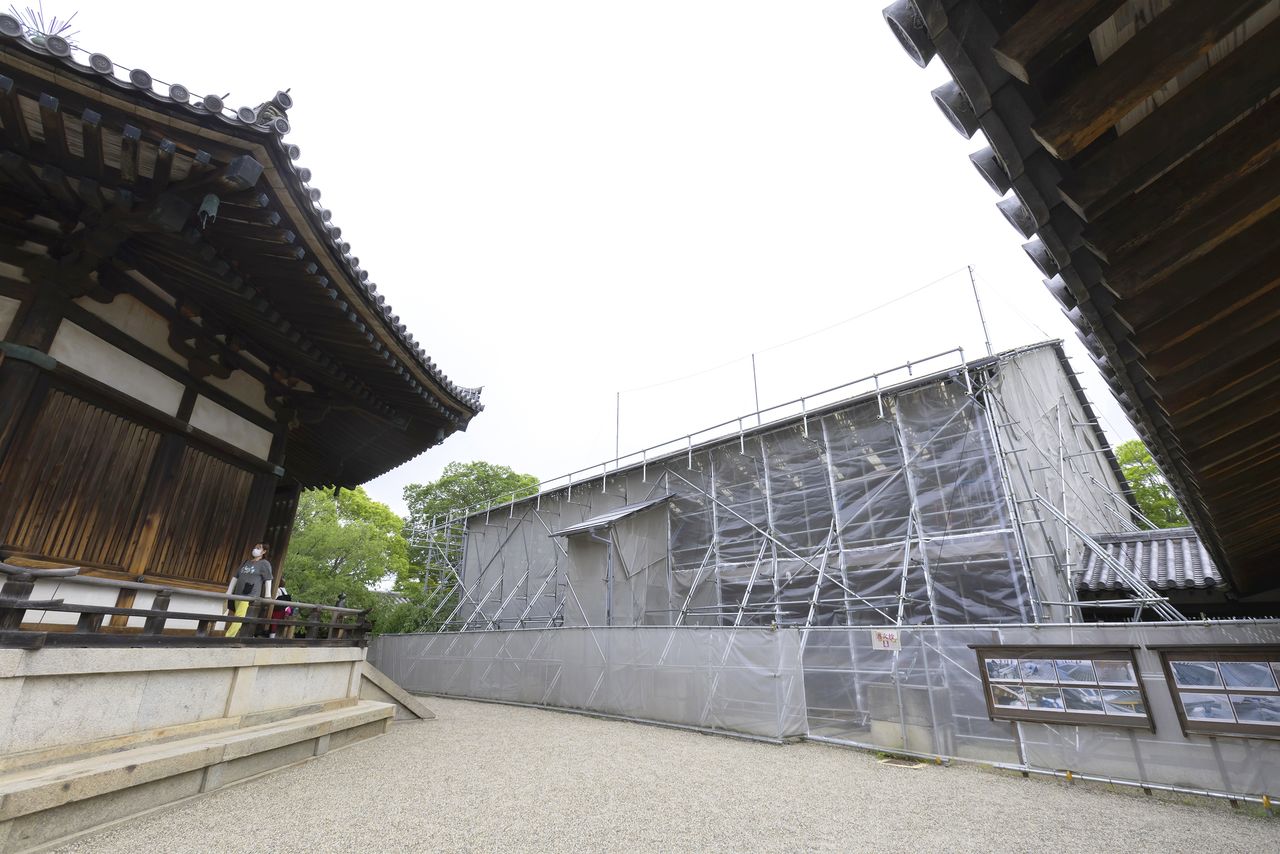
The Tō-in Raidō prayer hall, next to the Yumedono, is shrouded for restoration work. (© Kinoshita Kiyotaka)
Tō-in, the eastern part of the temple complex, is famous for the Yumedono Hall of Dreams, erected in 748 on the site of Prince Shōtoku’s Ikaruga Palace. A cultural property restorer guided visitors around the Tō-in corridor surrounding the complex and the Tō-in Raidō, the Yumedono prayer hall. Both structures, designated important cultural properties, were erected in the thirteenth century. Restoration work is scheduled to be completed in 2024.
Construction manager Yoshida Yasunori, from the Nara Prefectural Office of Cultural Assets Preservation, explains that the corridor frame is constructed using wood joinery and that the same species of wood is used when old parts of the structure are replaced with new wood. Searching for the same hinoki Japanese cypress and other domestically grown wood of the same vintage is a prerequisite that makes restoration work complex and time-consuming.
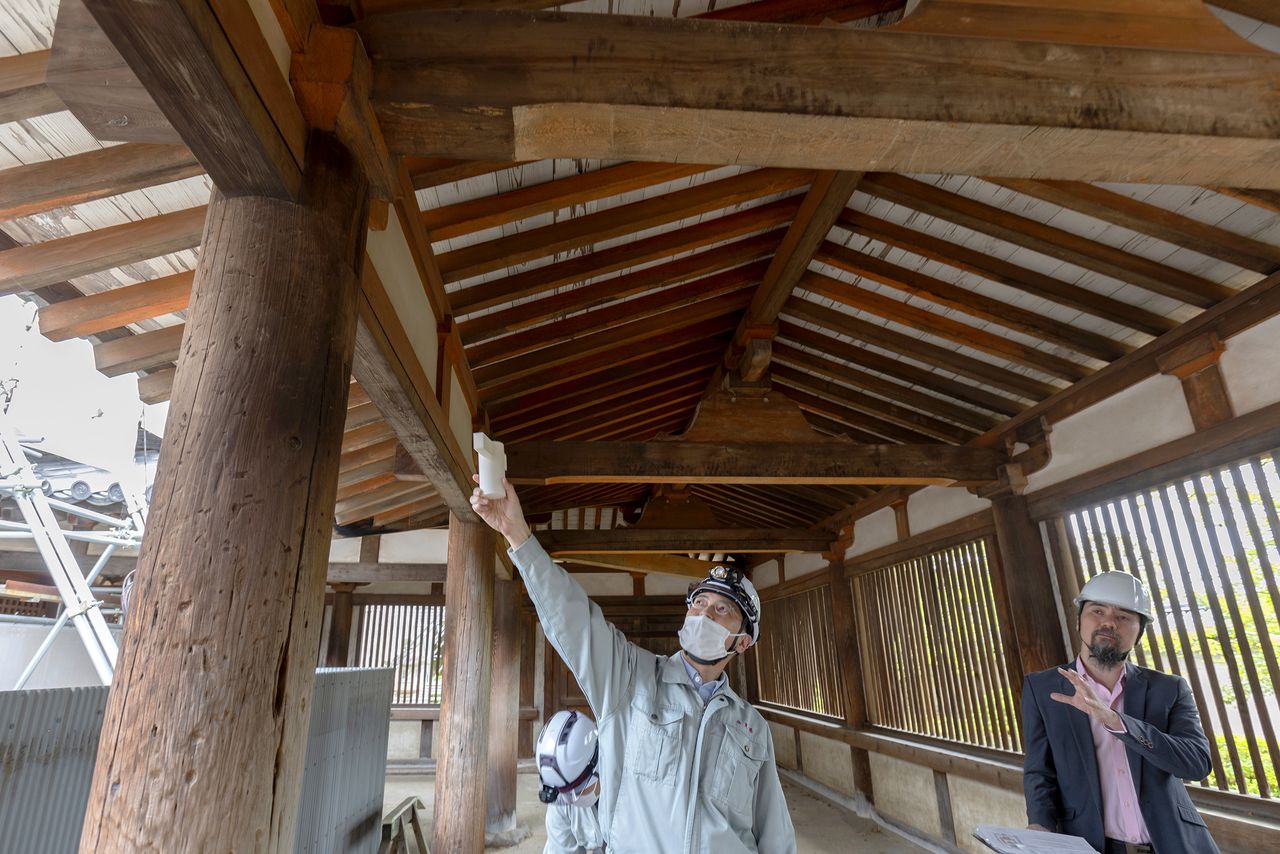
Yoshida uses a model to explain how the corridor is built. Pillars and beams are connected using wood joinery, a nail-free technique characteristic of Japanese architecture. (© Kinoshita Kiyotaka)
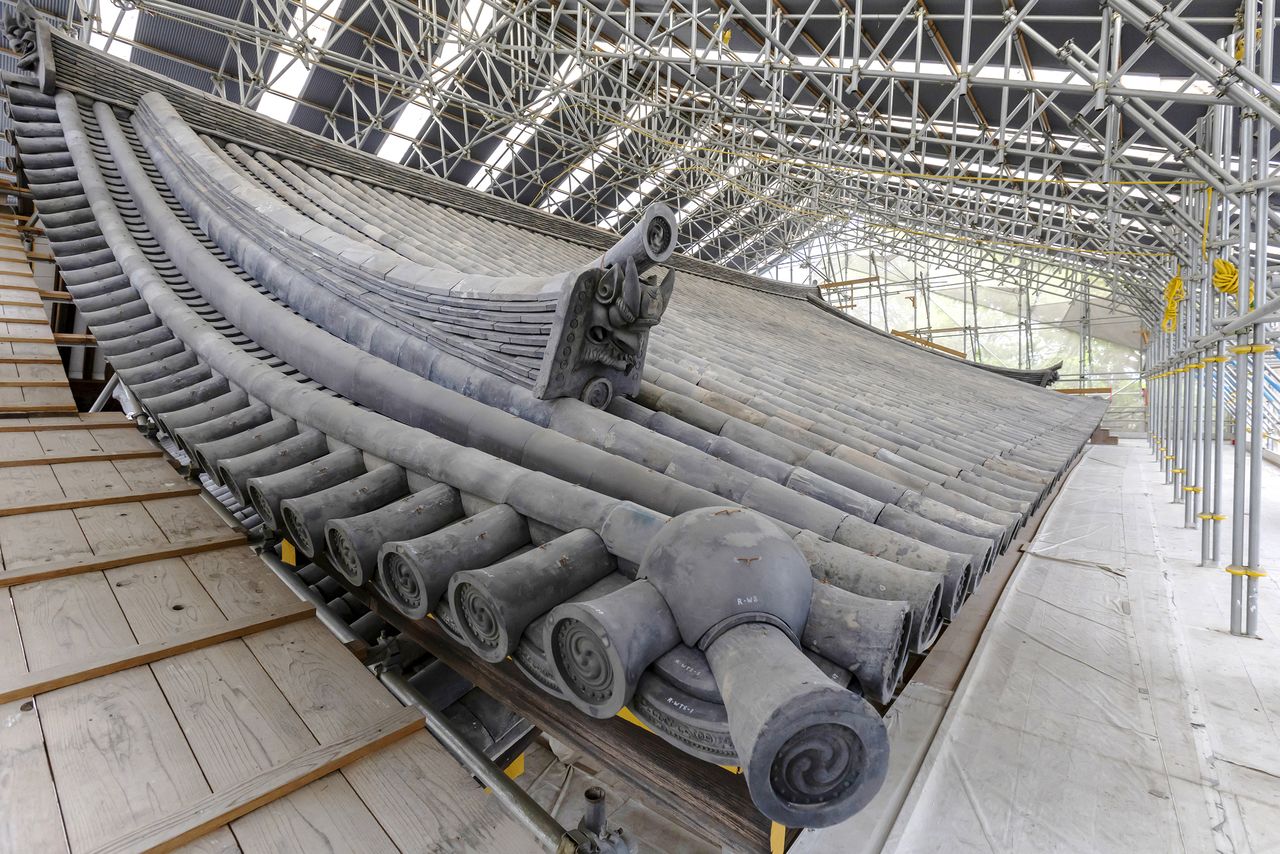
A view of the partially restored roof of the Raidō. Some of the tiles date from 1,300 years ago. (© Kinoshita Kiyotaka)
Roof tiles are also precious cultural artifacts. The work of reroofing a structure thus requires advanced skills and extensive experience. To detect the tiles’ soundness, each is struck with a hammer; a metallic tone means that it is intact and can be reused. A low, muffled sound, on the other hand, indicates that it must be replaced. The tiles on the northern side of the Raidō are susceptible to freezing in winter and can be fragile. Accordingly, new tiles are laid on the north side and older tiles are transferred to the sunnier south side for reuse.
In fact, reusing roof tiles at Hōryūji is not a modern phenomenon. The practice has been going on for centuries, making Hōryūji a repository of sorts for roof tiles, some of which are from the Asuka period (593–710), predating the construction of the Raidō. Visitors on the tour were invited to inspect and compare tiles from various eras.
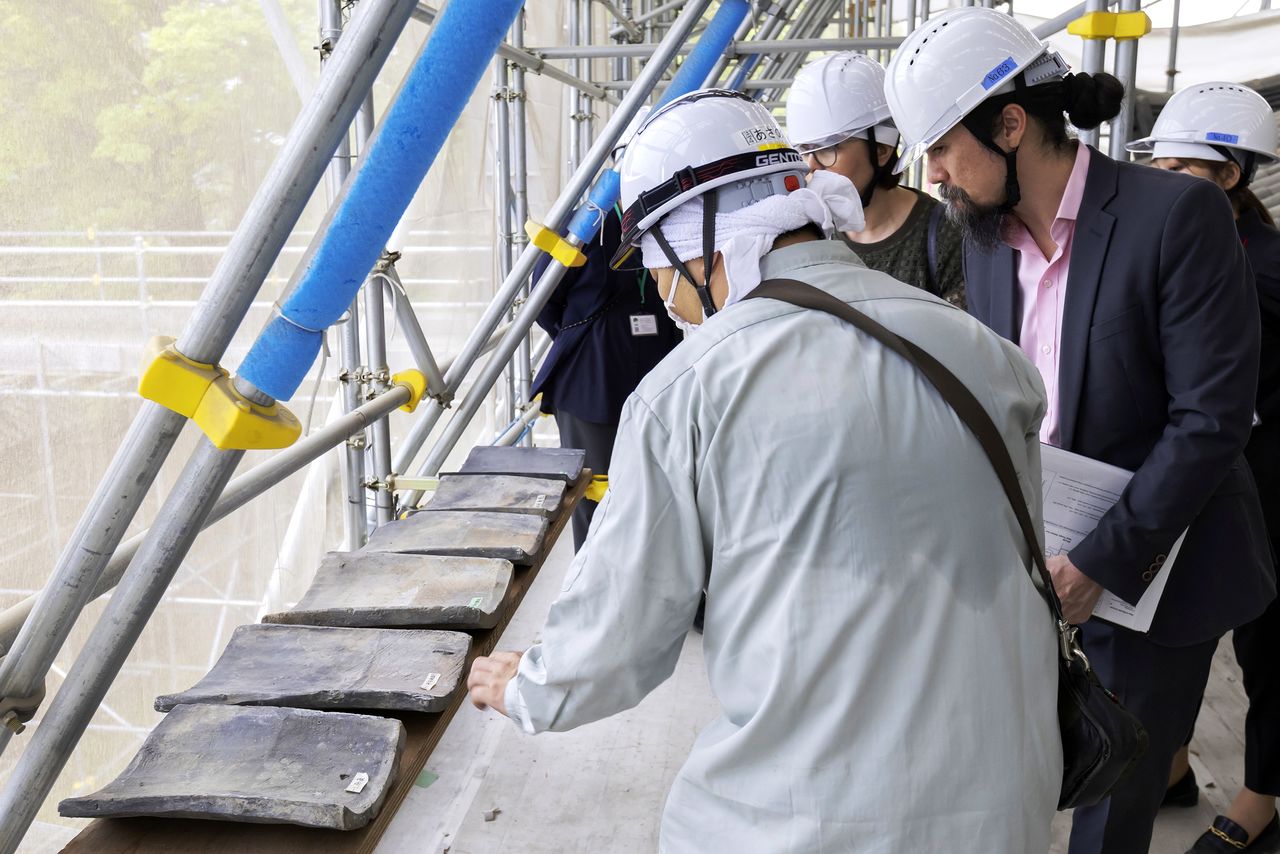
Comparing roof tiles produced in different eras, starting from 1,300 years ago to the recent past. (© Kinoshita Kiyotaka)
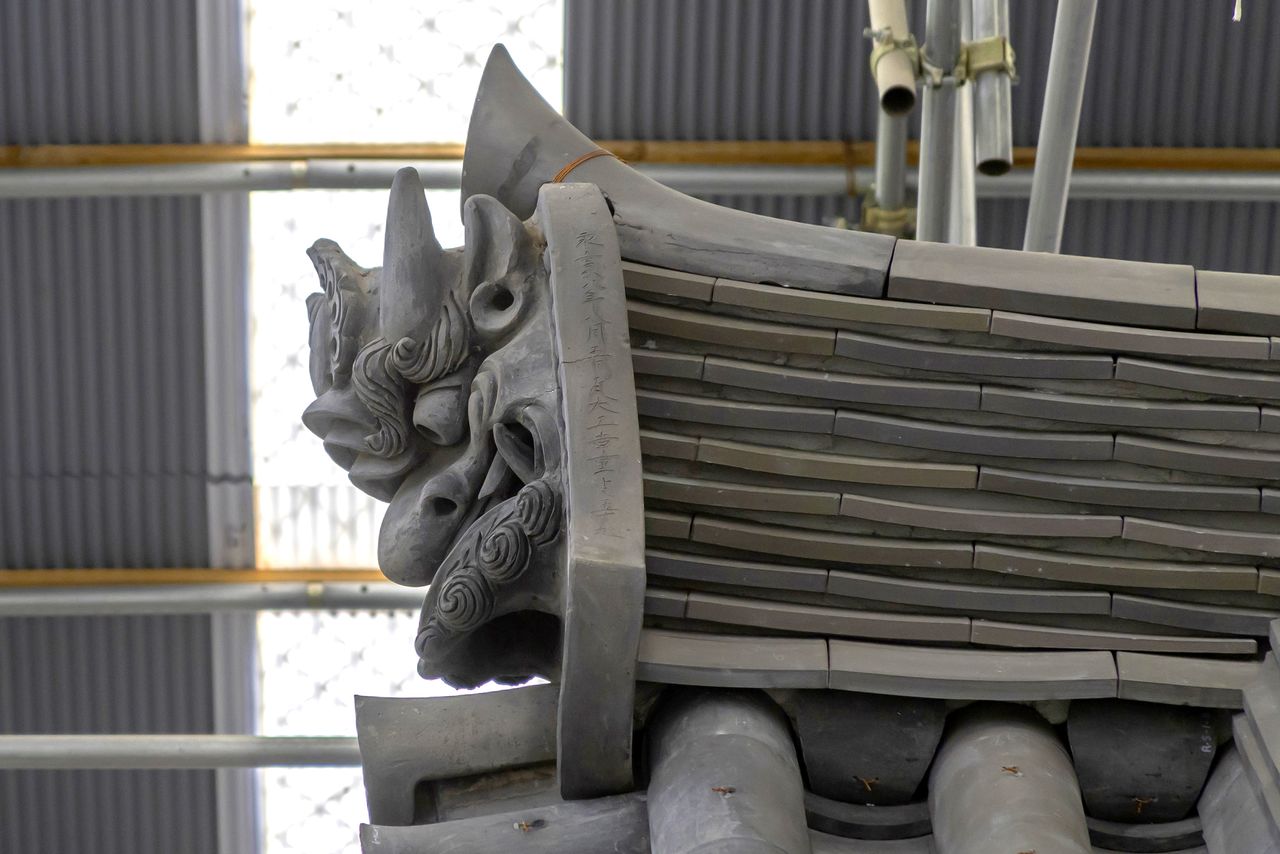
This onigawara ridge-end tile dating from the Muromachi period (1333–1568) bears the name and age of its maker and its production date. (© Kinoshita Kiyotaka)
The restoration work offered tour participants a rare opportunity to get a close look at the roof of a historical structure. The roof ornamentation and other elements of traditional Japanese architecture endlessly intrigued the foreign visitors, who peppered their guide with questions such as whether historical structures are subject to the same strict earthquake-resistance standards as modern buildings or whether sprinkler systems are installed.
The boom of the temple bell at dusk brings to mind a famous haiku by Masaoka Shiki (1867–1902)—“I bite into a persimmon / and a bell resounds— / Hōryūji” (trans. Janine Beichman). But the sound we hear is of church bells tolling. Perhaps the opera company’s sound technicians are running a test. We are truly living in an age where the fusion of different cultures is possible.
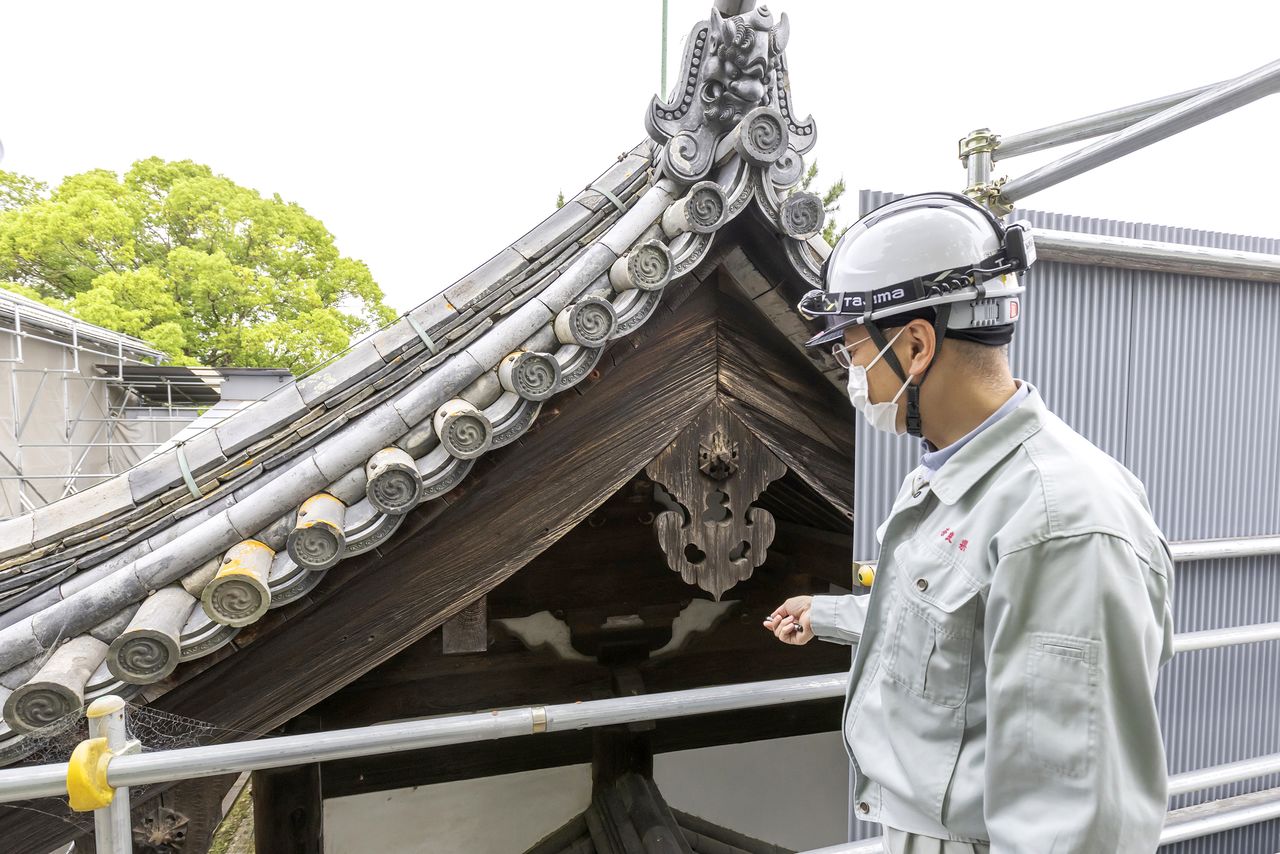
A close-up view of the roof ornamentation on the Tō-in Nanmon gate is only possible during restoration work. (© Kinoshita Kiyotaka)
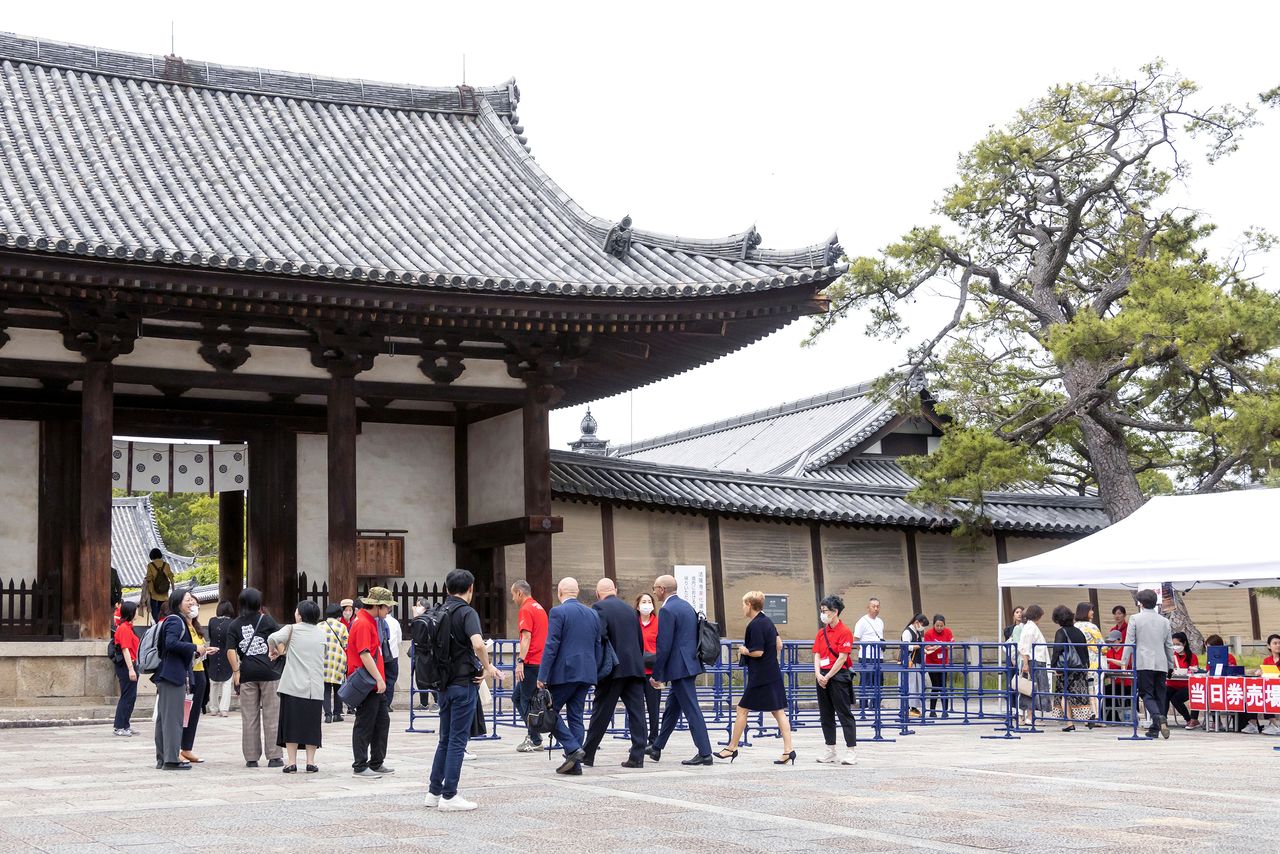
Guests for the performance gather at the Nandaimon gate after the temple has closed for the day to ordinary visitors. (© Kinoshita Kiyotaka)
Hōryūji
- Address: 1-1 Ikarugachō Hōryūjisannai, Ikoma-gun, Nara Prefecture
- Hours: February 22 to November 3, 8:00 am to 5:00 pm; November 4 to February 21, 8:00 am to 4:30 pm.
- Admission charge: Adults, ¥1,500; ages 6 to 15, ¥750, for admission to the Sai-in and Tō-in complexes.
- Access: 20 minutes on foot from JR Hōryūji Station. Regular bus service available from JR Hōryūji, JR Ōji, and Kintetsu Tsutsui stations.
(Originally published in Japanese. Reporting and text by Nippon.com. Banner photo: Japan Opera Festival 2023 Hōryūji Concert. © Sawakami Opera Foundation.)
